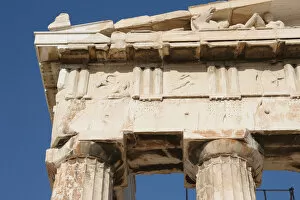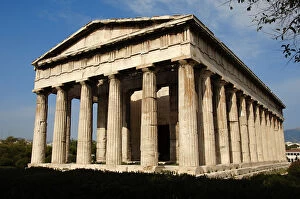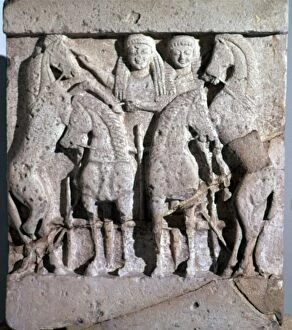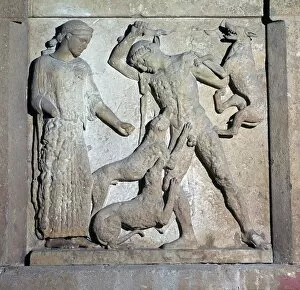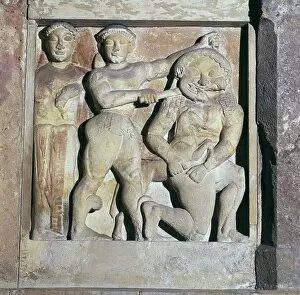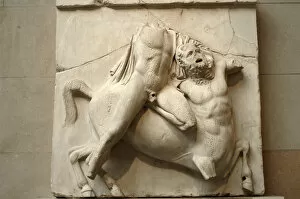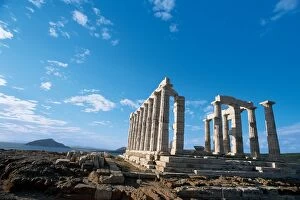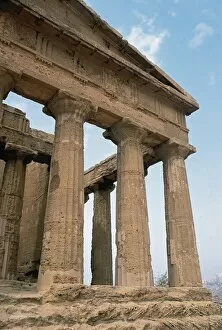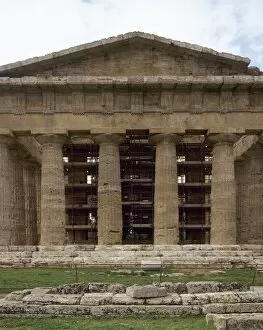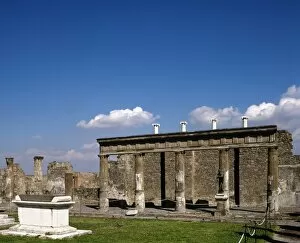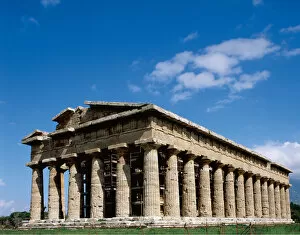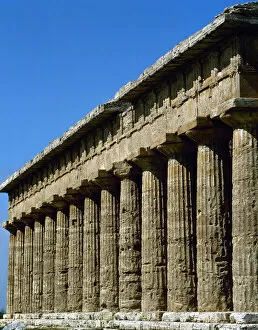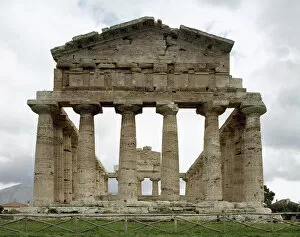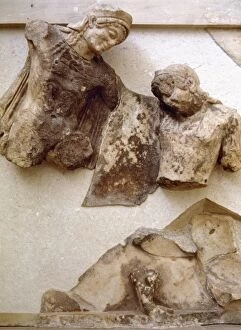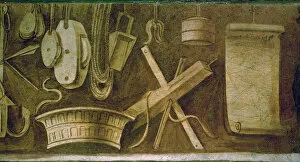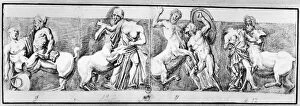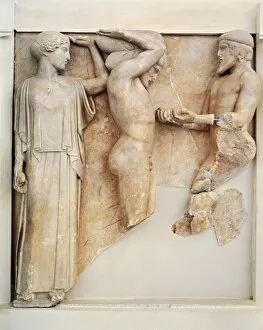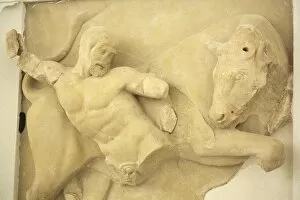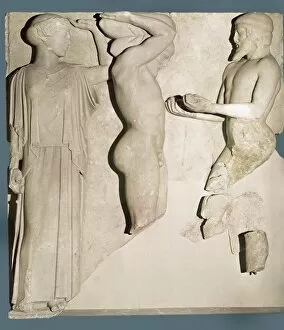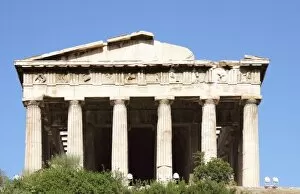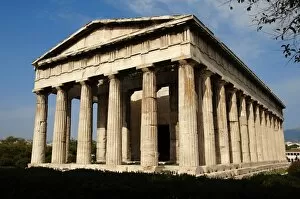Metope Collection (#2)
Metope, a term that resonates with the grandeur of ancient Greek art and architecture
For sale as Licensed Images
Choose your image, Select your licence and Download the media
Metope, a term that resonates with the grandeur of ancient Greek art and architecture. It refers to the sculpted panels adorning the Parthenon, an iconic symbol of Athens, Greece. These metopes depict various scenes from mythology and history, capturing moments frozen in time. One such metope is South Metope XXXI, which showcases a fragment of the fierce battle between warriors on horseback. The intricate details etched into this marble masterpiece transport us back to a bygone era when bravery and valor were celebrated. Another captivating example is the Greek metope of Herakles and the Kerkopes dating back to the 6th century BC. This artwork portrays Herakles engaged in combat with mischievous creatures known as Kerkopes. The craftsmanship displayed here exemplifies the mastery of Greek artisans during this period. Moving on to another set of metopes found within the Parthenon marbles, we encounter Metope XXIX depicting a centaur overpowering a defeated fighter. This scene captures both strength and vulnerability intertwined in an eternal struggle between mythical beings. Delving deeper into Greek history, we discover The Athenian Treasury at Delphi constructed between 510 to 480 B. C. , adorned with its own unique metopes. These intricately carved panels tell tales of triumphs and tribulations faced by ancient Greeks. The influence of these magnificent sculptures extends beyond Athens itself; it reaches other notable sites like THESEION-HEPHAISTEION in V century B. C. , showcasing how widespread this artistic tradition was throughout Greece. Even outside Greece's borders lies evidence of their artistic prowess - take for instance The Temple of Neptune or Poseidon in Paestum. Its majestic metopes stand as testaments to Greece's cultural impact on neighboring regions. One cannot overlook Atlas bringing Heracles the Apples of Hesperides depicted on a metope from Olympia's Temple of Zeus – an engraving that immortalizes this legendary encounter.

